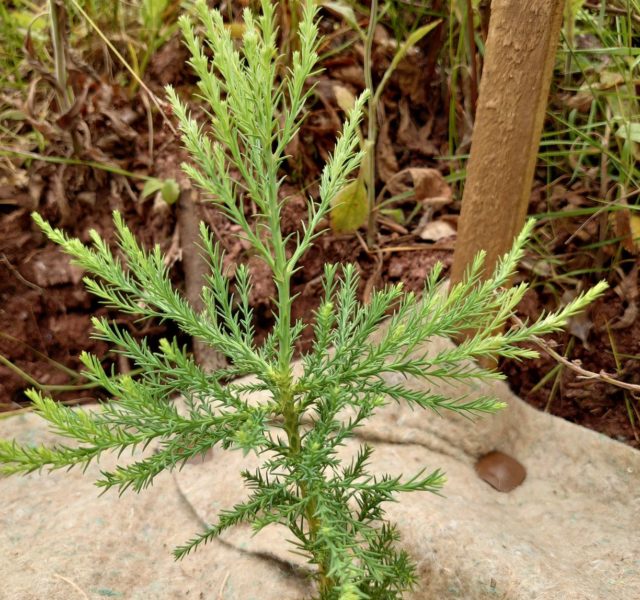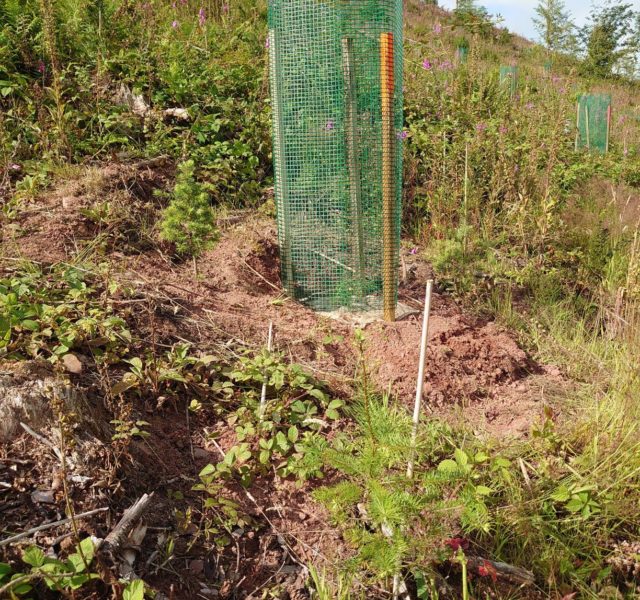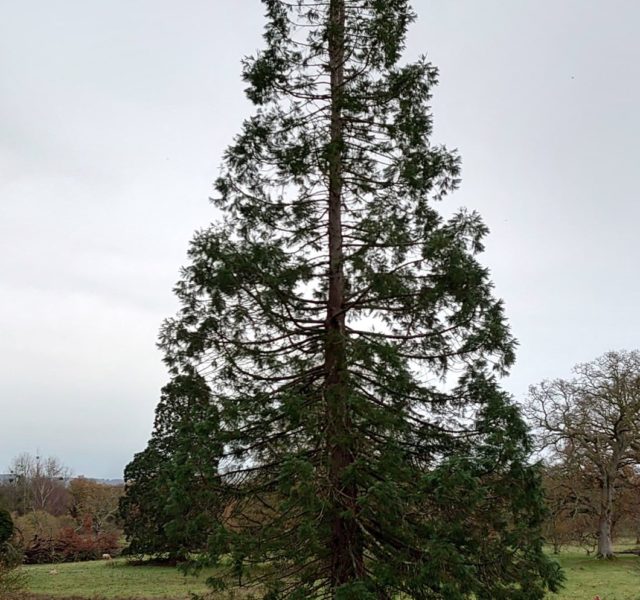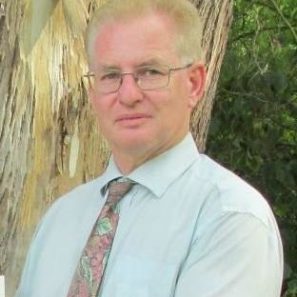Selling Carbon
Is forestry too tied up in the debates around yield class, soil carbon, conifers v broadleaf etc? Forestry consultant and RFS South Western Division Council member Bryan Elliott considers a project which has thrown up a raft of learning points.



Is forestry too tied up in the debates around yield class, soil carbon, conifers v broadleaf etc? Are we guilty of over complicating the issues to such an extent that it is putting people and organisations off buying or investing in forestry carbon storage?
‘Keep it Simple’ is the message of the One Life One Tree project which is planting over 500 Giant Sequoias in Brecon, as well as in Hampshire, with plans underway for planting in Devon and Scotland under the direction of forestry consultant and RFS SW Division Council member Bryan Elliott.
For Bryan, the project has thrown up a whole raft of learning lessons, not least about importing trees, which he shares below.
Selling Carbon through Sequoias
Selling isn’t about what you have to sell, but people’s appetite to buy it. You can have the greatest product in the world but if no one wants it or no one understands why they want it then no one will buy it. Welcome to the world of Carbon.
Simply put, a tree takes carbon dioxide, breaks it down, pumps out the oxygen and stores the carbon. So why has it been so difficult to sell forestry as carbon storage? Is it that we make it too complicated? With every positive seems to come a negative: Soil carbon, planting on peat, conifer versus broadleaf we tie ourselves up in debate.
In The Times in November an article and an editorial was published, about the One Life One Tree, project planting Sequoias. We’ve been growing Sequoias in the UK for generations, normally the Coastal Redwood, there’s nothing particularly unusual in growing them and, as with other established species, a plethora of opinion on their optimum silviculture. Putting aside that this project is planting the more unusual Giant Redwood, what is more interesting than its silviculture is the impact planting just 500 trees is causing.
The One Life One Tree message is simple: Plant one tree and it will soak up all your carbon emissions for all your life. One life, one tree. That’s it. Simple and in your face. If we use 5.3tCO2 per person per year in the UK that’s 425 tonnes if we live until we are 80. General Sherman, one of the biggest of the Giant Redwoods holds approximately 392 tonnes. Carbon dioxide is a three part molecule, with one carbon atom and two oxygen atoms, with carbon accounting for 27.3% of molecular weight. When a tree absorbs the carbon it (mostly) releases the oxygen atoms into the atmosphere. Therefore for every 1 tonne of carbon the tree absorbs while growing, it is removing 3.66 tonnes of carbon dioxide from the atmosphere.
What’s not to like about this project? Well, like all tree-based carbon-offset schemes there is a considerable lag between emitting the carbon and storing it. The need is right now, this year and the next ten years. If it allows people to put aside their guilt and carry on as before because they have offset their direct emissions the project, like all carbon storing projects, isn’t really doing much. The trees are being planted at final spacing with tree carbon sequestration starting to optimise at the 250-year point and thereafter continually amassing. Putting on 5 rotations of spruce over the same time period probably yields a similar volume but at least has put some of that volume into housing and other longer-term uses.
What is to like about the project, however, is much bigger than the silviculture. The project’s marketing provides a direct route to people’s hearts in a way that discussing yield-classes doesn’t. It was important for the project to source seed from the biggest trees, because big parents produce big children, right? Right, it’s not about the science but about relating to the public’s capacity for science in front of a bowl of cereal and the paper on a weekend morning. There is no connection to carbon codes, or schemes, nothing complicated, no forms, no greyness. And this is the lesson; One Life One Tree is an example of how we could be selling ourselves. It doesn’t matter if we are selling carbon, or biodiversity or timber or health we often overcomplicate the issue because we are too inward looking. We fail to relate to the consumer.
At this point I have to admit to being part of the project, helping with import of material, planting and silviculture. Part of this help has been because I wanted to work with a new type of forestry business where creating demand was equally as important as creating supply. Part of it was because it provided an insight into the new regulations around importing plant material. For anyone wanting to import live seedlings through the new plant-health & import regulations, be prepared for complex form-filling and potential delays in customs that may impact on the health of the plants. But also be prepared for the plant health agency to be responsive and helpful. For those looking to import material of novel or innovative species the process is time consuming but worthwhile. One Life One Tree now have progeny straight from the Sierra Mountains and from genetically vigorous trees that have subsequently been lost to forest fire.
This project is providing a look into a new world. A post-Brexit world of import regulations; a climate-change word of experimenting with new species in a limited way; a new type of silviculture that can add to the diverse mix of forest typologies that will come to define modern forestry and a new way of engaging with the public. None of these are earth-shattering changes but follow a pattern of small-changes and marginal-gains that add up to substantial new ways of doing things. Some will become standard, some will be discarded but these experiments are allowing us to move forward at a time when we need to explore every avenue.
Please share your experiences by contacting communications@rfs.org.uk


